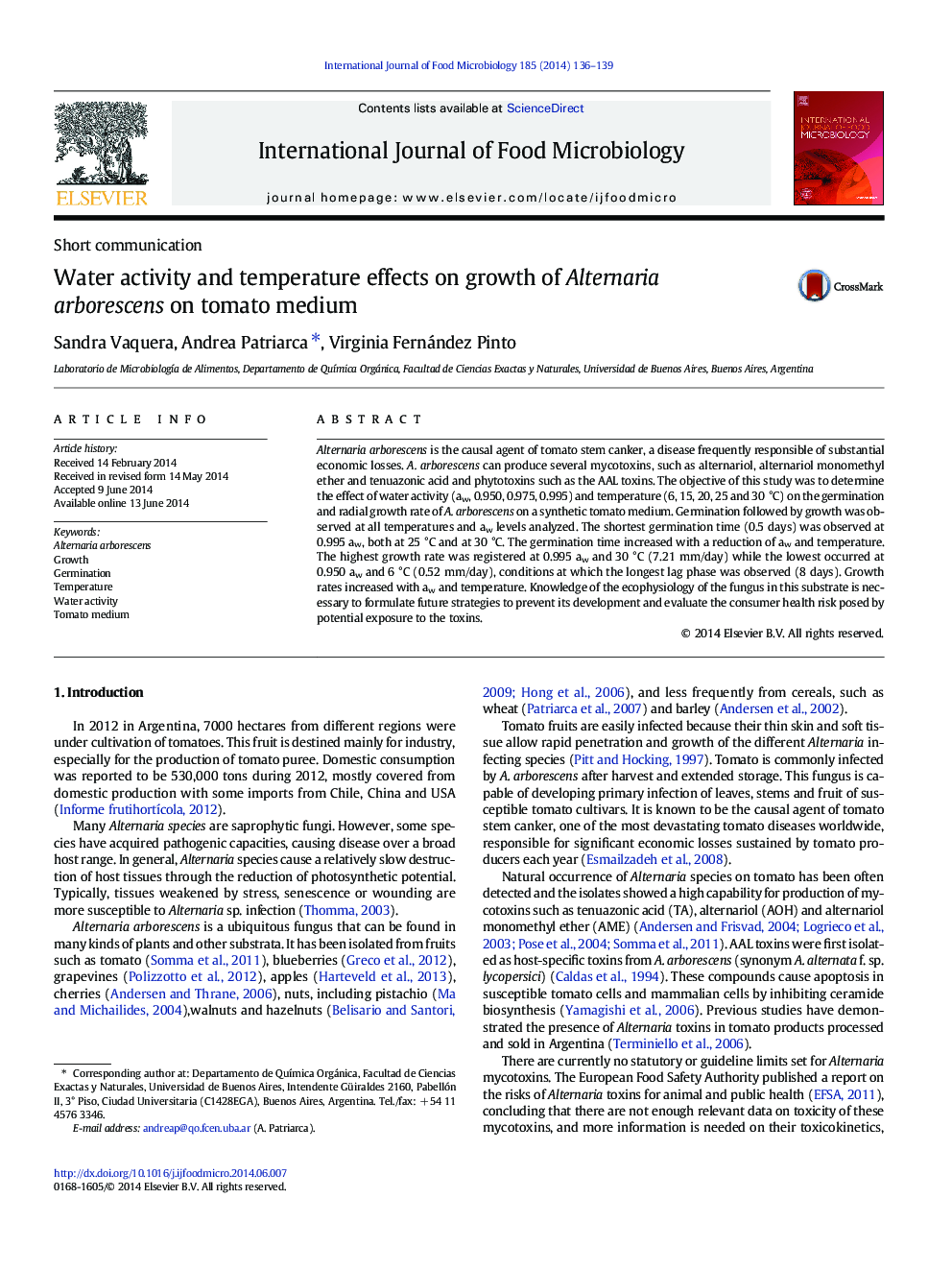| کد مقاله | کد نشریه | سال انتشار | مقاله انگلیسی | نسخه تمام متن |
|---|---|---|---|---|
| 4366861 | 1616598 | 2014 | 4 صفحه PDF | دانلود رایگان |

• The effect of water activity and temperature on growth of Alternaria arborescens was studied.
• The shortest germination time occurred at 0.995 aw, 25 °C and 30 °C.
• The highest growth rate (7.21 mm/day) was observed at 0.995 aw and 30 °C.
• A. arborescens was able to grow at refrigeration temperature (5 °C) even at low aw levels (0.950).
Alternaria arborescens is the causal agent of tomato stem canker, a disease frequently responsible of substantial economic losses. A. arborescens can produce several mycotoxins, such as alternariol, alternariol monomethyl ether and tenuazonic acid and phytotoxins such as the AAL toxins. The objective of this study was to determine the effect of water activity (aw, 0.950, 0.975, 0.995) and temperature (6, 15, 20, 25 and 30 °C) on the germination and radial growth rate of A. arborescens on a synthetic tomato medium. Germination followed by growth was observed at all temperatures and aw levels analyzed. The shortest germination time (0.5 days) was observed at 0.995 aw, both at 25 °C and at 30 °C. The germination time increased with a reduction of aw and temperature. The highest growth rate was registered at 0.995 aw and 30 °C (7.21 mm/day) while the lowest occurred at 0.950 aw and 6 °C (0.52 mm/day), conditions at which the longest lag phase was observed (8 days). Growth rates increased with aw and temperature. Knowledge of the ecophysiology of the fungus in this substrate is necessary to formulate future strategies to prevent its development and evaluate the consumer health risk posed by potential exposure to the toxins.
Journal: International Journal of Food Microbiology - Volume 185, 18 August 2014, Pages 136–139